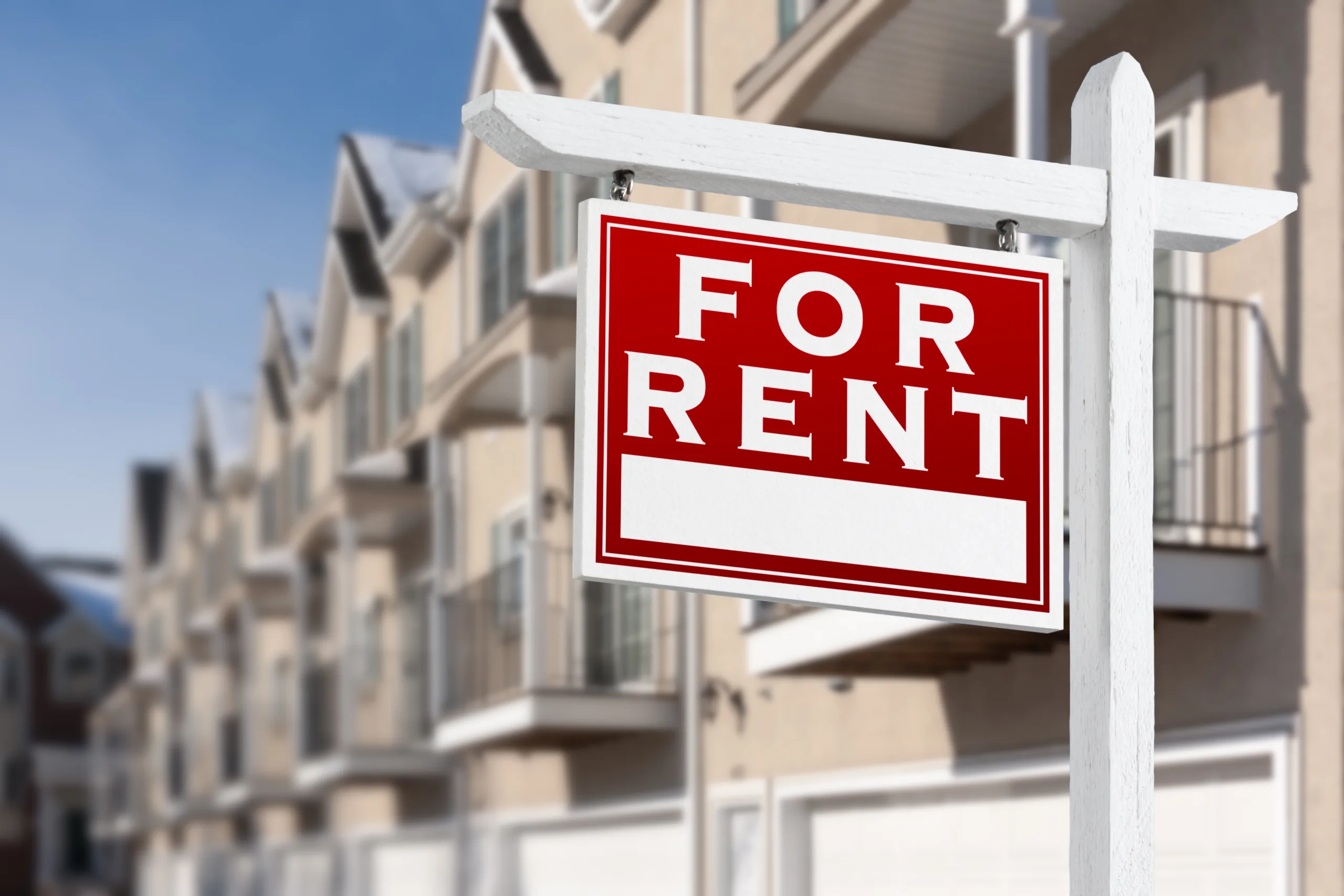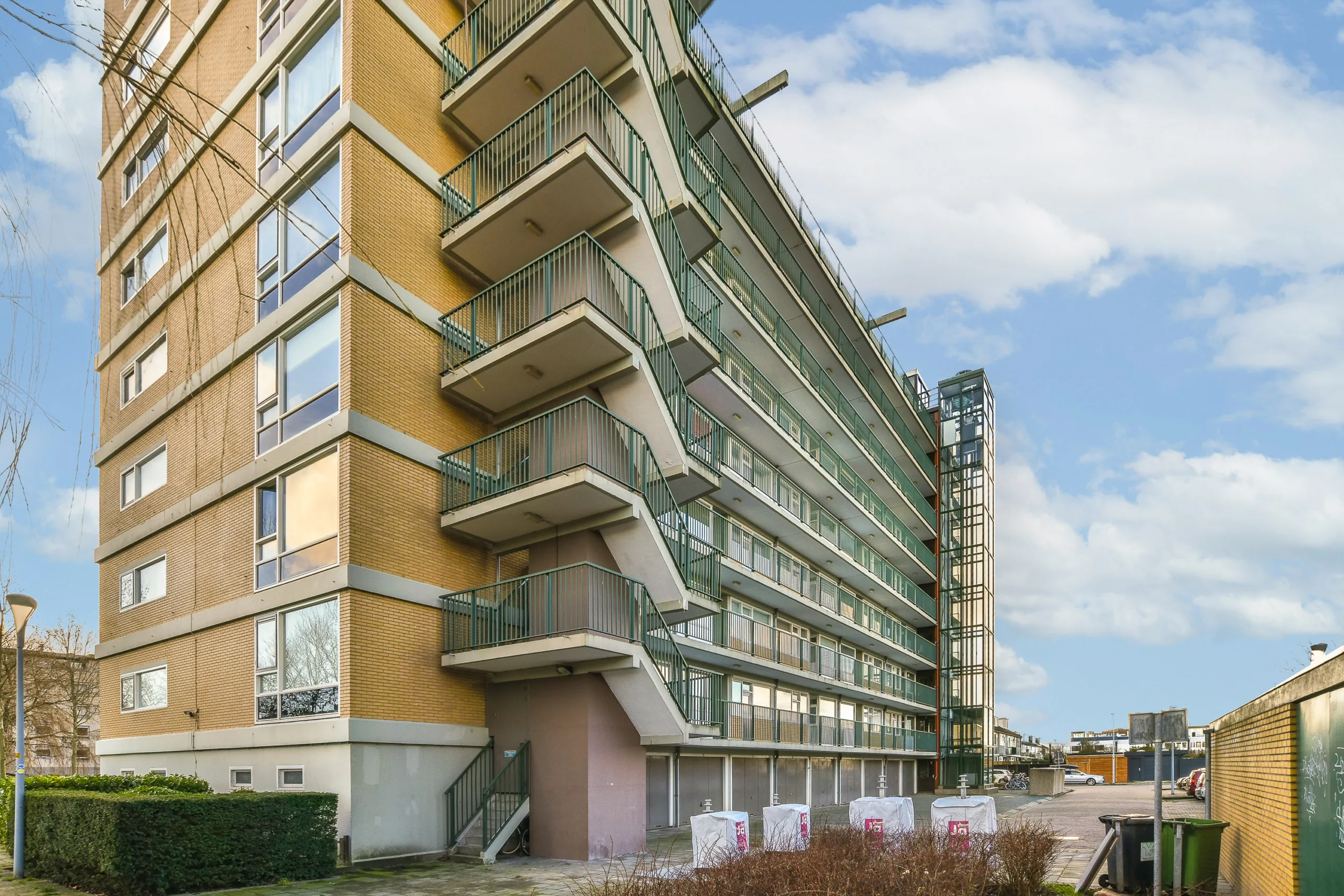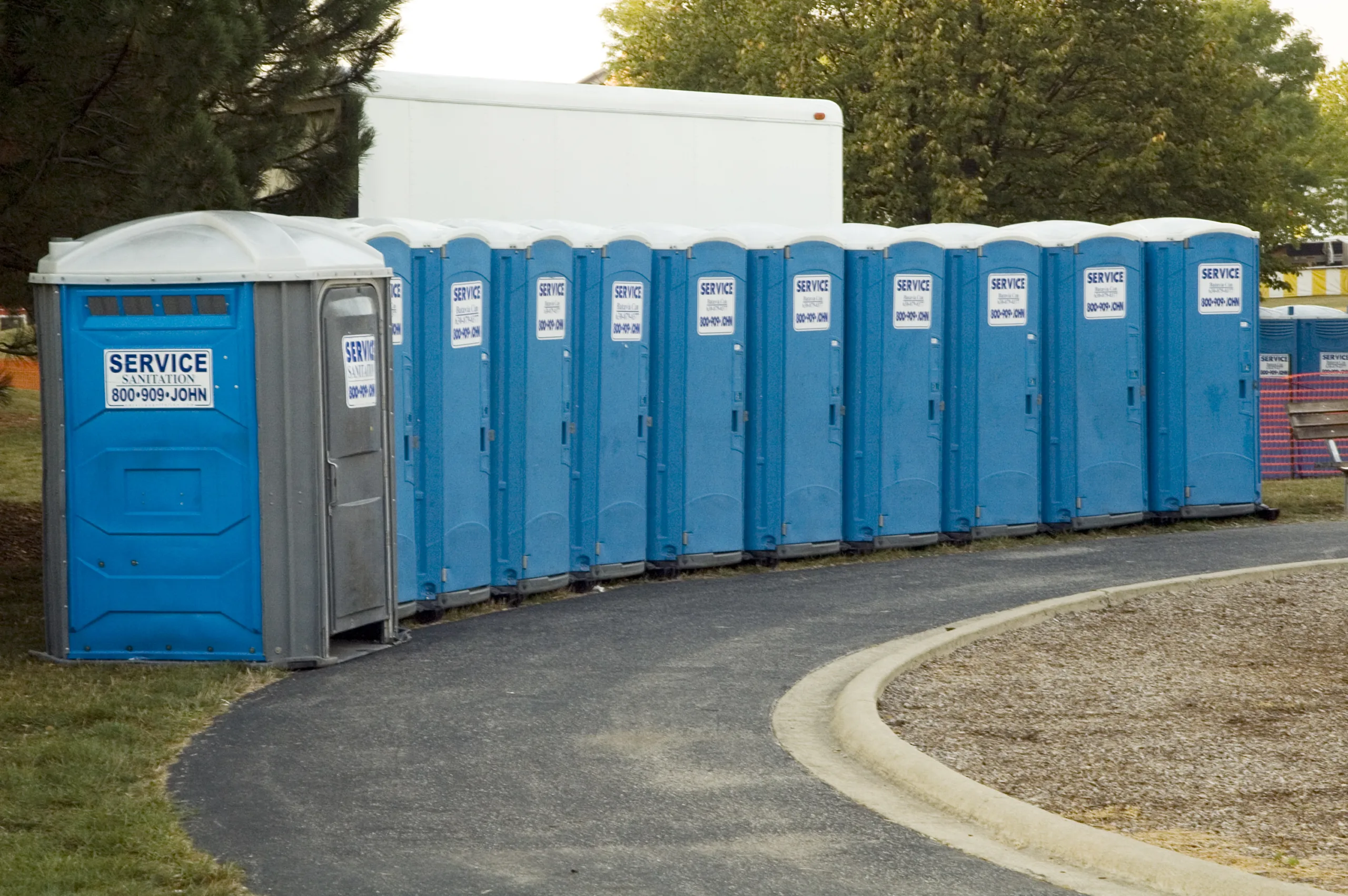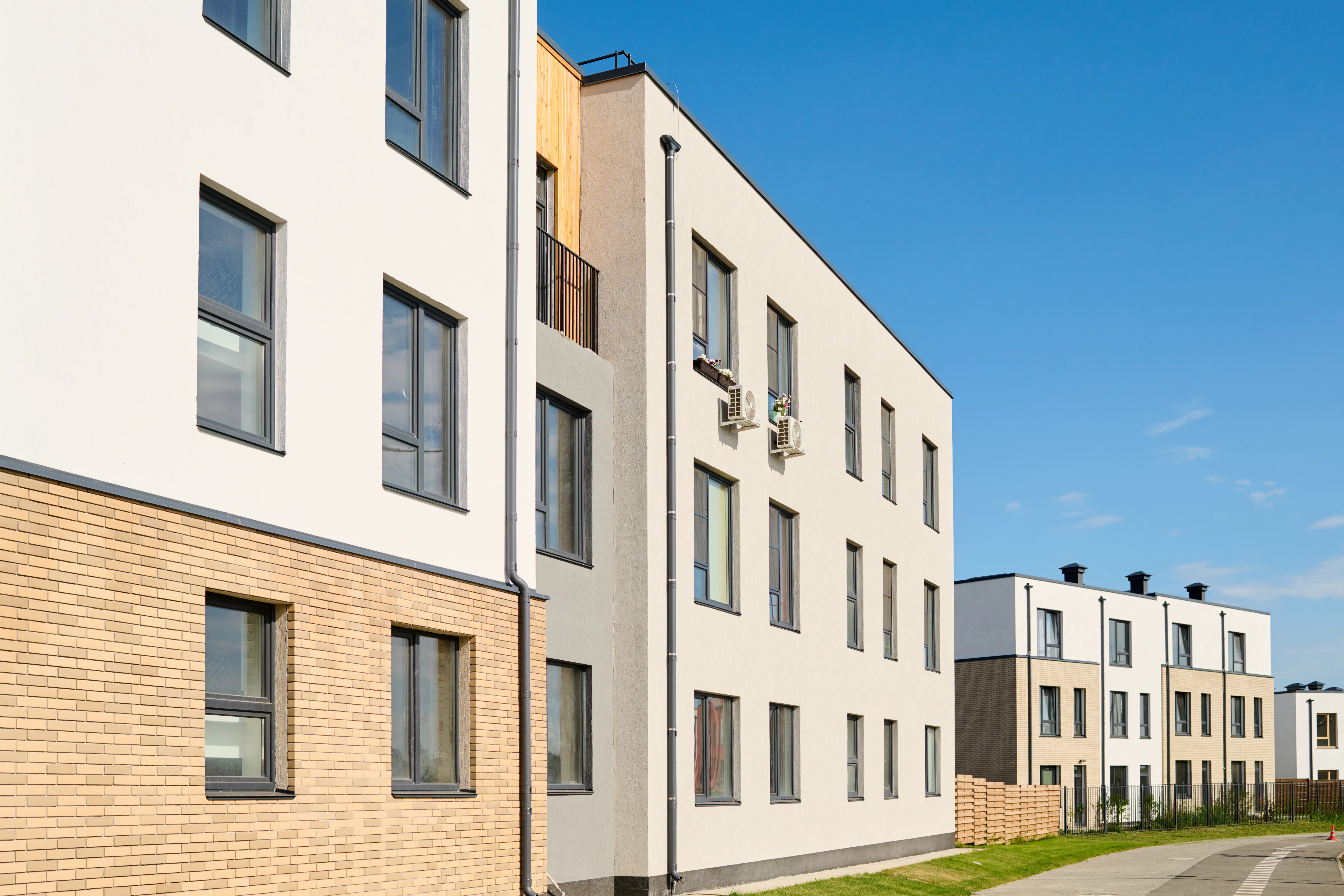- The national average rent hit $1,637 in July, up 0.9% from last year. Studio vacancies are set to drop by September.
- San Francisco’s rent rose 0.4% due to a strong job market and return-to-office mandates.
- Orange County rents increased 0.4% because of limited land for new housing.
According to Apartments.com, in July 2025, the national average rent rose to $1,637 per month, a 0.9% annual increase. Vacancy rates stayed at 8.1% overall. However, markets like San Francisco may feel extra pressure as studio vacancies are expected to fall sharply by early fall, which could push prices higher.
California’s Outliers
While most West Coast cities saw lower rents, San Francisco and Orange County went the other way. Both posted a 0.4% month-over-month increase.
In San Francisco, the average rent grew from $3,048 to $3,060 in just 30 days. This growth comes from a thriving tech industry and return-to-office mandates at major firms like Google and Uber. The city is now ranked fifth in the nation’s hottest rental markets for 2025.
Orange County’s rent increase has a different driver. The county is hemmed in by Los Angeles, state parks, and the Pacific Ocean. As a result, there is little space for new development. This scarcity continues to push prices higher despite the broader regional slowdown.
Get Smarter about what matters in CRE
Stay ahead of trends in commercial real estate with CRE Daily – the free newsletter delivering everything you need to start your day in just 5-minutes
National Movers
Brookline, MA, had the largest year-over-year jump, with rents up 7.4%. Chicago followed at 5.4%, and Brooklyn at 4.3%.
By contrast, Florida’s Gulf Coast markets saw steep declines. Cape Coral rents fell 7%, with Sarasota, Naples, and Fort Myers also in the top five decreases. Colorado Springs joined the list for the first time since April.
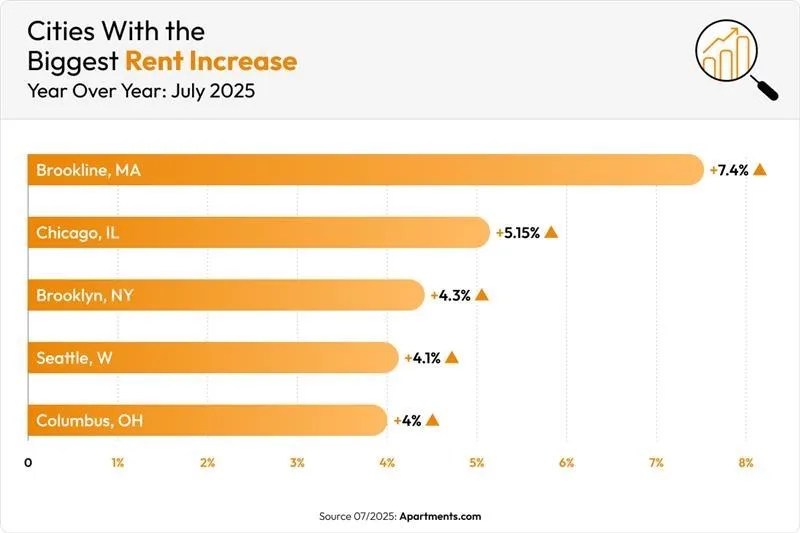
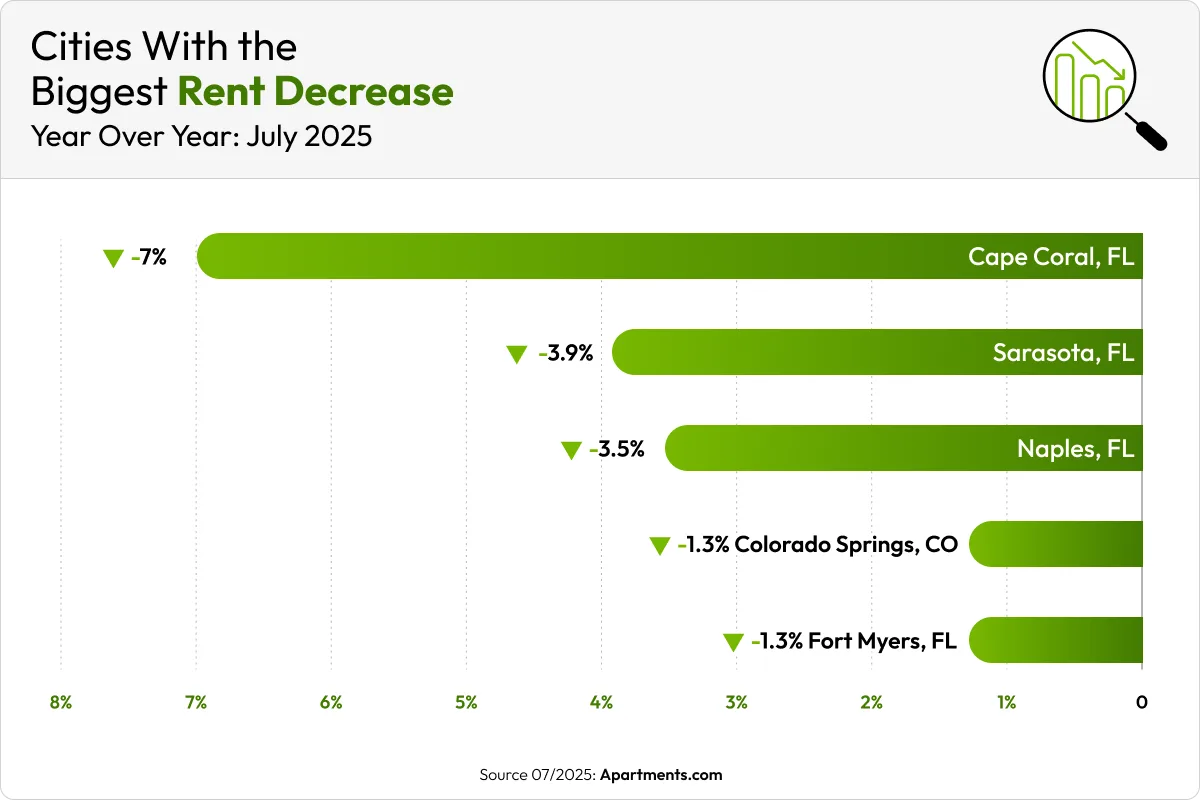
Why It Matters
Local factors can override national and regional trends. A strong job market or a shortage of land can keep rents high even when neighboring markets cool.
What’s Next
Studio vacancies are shrinking, and seasonal demand will slow after summer. Therefore, renters may find better deals in fall—except in hot spots like San Francisco and Orange County, where upward pressure is likely to continue.









